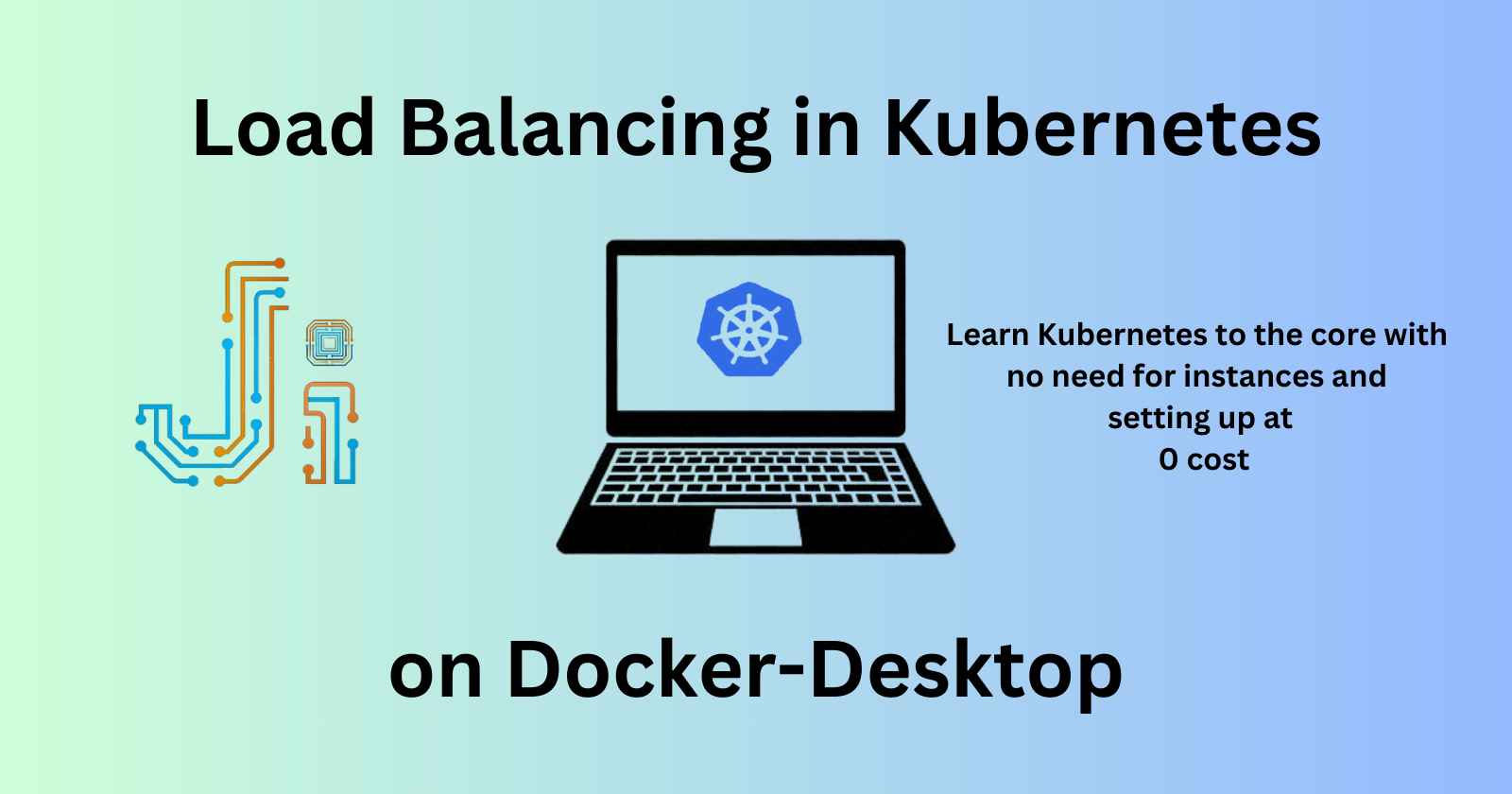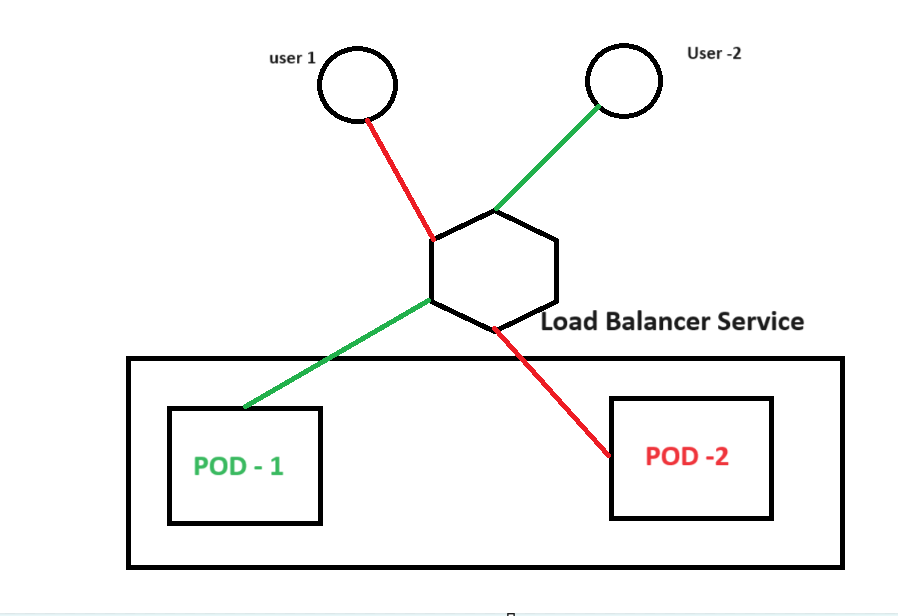Kubernetes on Desktop - 2: Load Balancing Evolution in Kubernetes on Docker Desktop
 JERRY ISAAC
JERRY ISAACTable of contents

Introduction:
As stated in my previous Blog Kubernetes on Desktop This is part 2 of learning Kubernetes on Desktop we are going to learn how to balance load i.e network traffic in an application between pods to ensure no pod is overloaded and the application stays available for all the users at all times so, load balancing becomes a vital part in application maintenance and optimizing.
If you like my content subscribe here
Load balancing in Kubernetes:
Before going into the steps we need to have a clear-cut idea of what we are doing. why we need it and How it works. load balancing in Kubernetes is a service that enables to route the incoming traffic evenly between the pods even though this load balancing service is not the most used method in Kubernetes understanding this concept helps us to conquer the world of Kubernetes

As we can see in the above Diagram what the Load balancer service does is it directs traffic to all the pods equally hence the result is that the pods are not overloaded and the user experience is smooth
Step 1 :
Let's begin !! First of all, you need to set up Kubernetes on your Desktop if you haven't check out Kubernetes on Desktop
I have all the required files needed for this in my Github Repo clone it for your practice
Here I have a Dockerfile that just has my index.html I used that file to create a docker image called load
docker build -t load .Now what I have is 2 deployment files deployment.yaml & deployment1.yaml
apiVersion: apps/v1 kind: Deployment metadata: name: kubeloadbalancer spec: selector: matchLabels: app: kubeloadbalancer template: metadata: labels: app: kubeloadbalancer spec: containers: - name: kubeloadbalancer image: load imagePullPolicy: Never ports: - containerPort: 80apiVersion: apps/v1 kind: Deployment metadata: name: kubeloadbalancer2 spec: selector: matchLabels: app: kubeloadbalancer template: metadata: labels: app: kubeloadbalancer spec: containers: - name: kubeloadbalancer2 image: nginx ports: - containerPort: 80If we compare these two files you can see that deployment.yaml file uses the docker image that we built the deployment1.yaml files use the nginx image we have purposefully kept the matchLabels the same in both files for the load balancer service to connect to both these files.
If you like my content subscribe here
Step 2
Now we need to create the load balancer service to direct the incoming traffic to the pods so create a yaml file named loadbalancer_svc.yaml
apiVersion: v1
kind: Service
metadata:
name: kubeloadbalancer
spec:
selector:
app: kubeloadbalancer
type: LoadBalancer
ports:
- port: 8083
protocol: TCP
targetPort: 80
So what we are doing here is that we are creating a load balancer service that points to the matchLabels of the deployment files we have set and targeting port 80 in those pods (deployment & deployment1) and forwarding them to 8083 so now what will happen is that the service we created routes traffic from the internet to these 2 deployments in a round-robin method.
kubectl apply -f deployment.yaml kubectl apply -f deployment1.yaml kubectl apply -f loadbalancer_svc.yamlThese commands will start the 2 deployment pods and the service
Ensure the pods are running
kubectl get pods

Ensure the service running
kubectl get svc
as you can see the service is running in the port we have declared in the yaml file
Result:
Now we have set up everything if we hit http://localhost:8083 on the internet we should see the output as

now it works this serves the content from the deployment.yaml file lets check from another browser to ensure that our load balancer is doing its work

Voila !!! here we go we can see the default page of nginx in the deployment1 file hence we have proved that Load Balancing is achieved in Kubernetes don't forget we are doing this at 0 expense in our desktop
Next up in this series, we are going to learn how we can auto scale in Kubernetes on a desktop
Happy Coding !!!
Now if you like my content give me a subscribe here https://blog.jerrycloud.in/newsletter
Subscribe to my newsletter
Read articles from JERRY ISAAC directly inside your inbox. Subscribe to the newsletter, and don't miss out.
Written by

JERRY ISAAC
JERRY ISAAC
I am a DevOps Engineer with 3+ years of experience I love to share my Tech knowledge on DevOps and I love writings that's how I started Blogging
